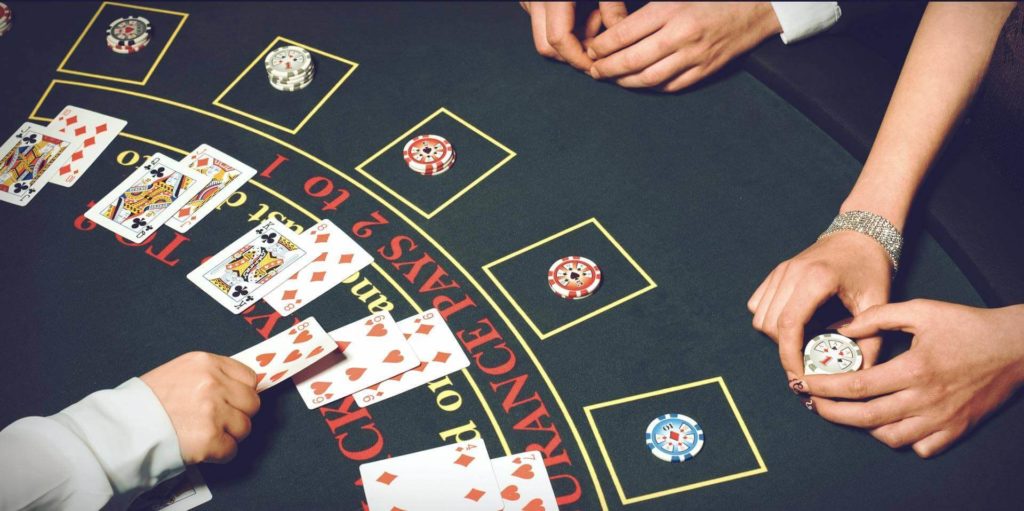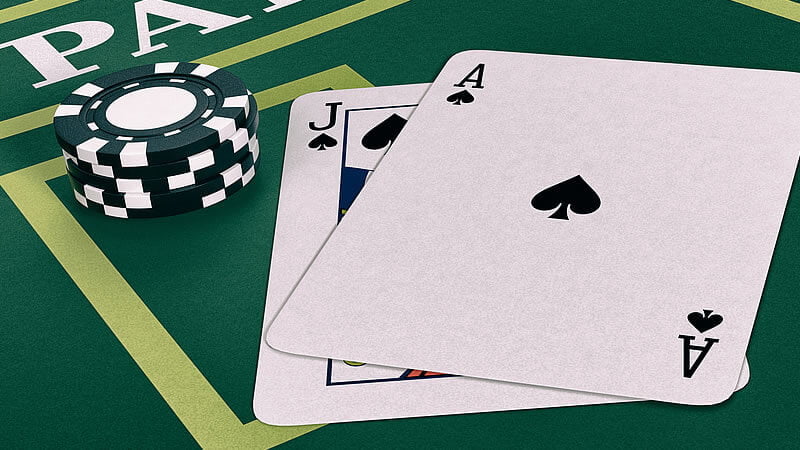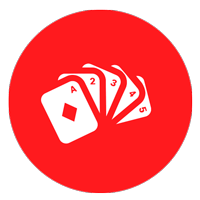Introduction to Card Counting
Card counting is used in the game of blackjack to increase the chance of a player winning at a game over the casino. Although, card counting is not illegal, but it is highly frowned upon at casinos. As a matter of fact, a player can get kicked out from a casino if found engaging in the act. The bottom line is that if you fully understand the game and the process involved in the counting, you can easily decipher when the odds at the table are in your favor. All you need to do is learn the basic skills to get you started at the game and as you advance in the game, you can begin to explore advanced card counting tactics and improve your skills as well as your chance of winning big at the game of blackjack.
It is essential to mention that practically anyone can learn the process involved in card counting, with a bit of practice, of course. However, you have to be careful when counting cards at casino because it can get you in a serious trouble if you are caught. Before we go ahead to explore the steps involved in card counting, let’s take a sneak peek into its history.

History of Card Counting
The history of card counting is traceable to Ed Thorp. He was a mathematician who discovered that by taking out one 2 from a deck of cards, a strategic blackjack player can have a positive expectation from the game. He went on to devise a system and experimented with it in a real life environment. He wrote is experience in the bestseller book, “Beat the Dealer”. Many players have contemplated the significance of card counting in games and have wondered if it really works in the real sense of the word.
The fact is that card counting works and many players have benefited from the technique. So, why does it work? It is a well-known fact that when the remaining shoe possesses a higher proportion of aces and tens, technically, there would be additional blackjacks dealt. Naturally, Blackjack Pay is 3:2, which is about 150% of your total bet. Here, the dealer automatically bust, which means going over 21, more often. On the other hand, when there is higher proportion of small cards left, a lower number of blackjacks are dealt, and the dealer has a low chance of busting at any point in time. Due to the mathematical certainties, a card counter could maintain a monitoring of the proportion of the shoe, placing smaller bets when there are low cards and bigger bets when there are more high cards. This is a very simple concept. However, implementing the strategy in reality is a more complex process that requires professional skills.
It is crucial to point out that card counting is not for everyone. Over and beyond the required training, a card counter must be versed in money management. They must also learn how to avoid being detected by casino surveillance. Additionally, they must know the rules to circumvent and how to manage the emotional and financial swings that come with the package. No doubt, many players have earned millions of dollars at blackjack with card counting and anyone can learn the process. However, it all depends on you to learn and master the techniques involved in taking down the house. If you feel you are up to the task of becoming a professional card counter, read on to learn how you can count cards in four easy steps.

How to Count Cards in Four Easy Steps
As earlier mentioned, card counting gives you an advantage over the house. However, you must first learn how to effectively put the strategy together to achieve this. Having a good strategy can help you attain the big wins that you so much desire. There are basically four steps involved in card counting. These include assigning a value to every card; keeping a ‘running count’ based-off of the exact value of the dealt card; using the information to calculate the count per ‘true count’ or deck; and changing bets as the true count increases.
Technically, the process of card counting is simple. However, a player needs a bit of time to gain mastery of the process. Contrary to popular opinion, card counting has nothing to with memorizing exactly how many 3’s or queens are dealt from the shoe. It is basically about using a strategic system to monitor the ratio of high cards to low cards. Let’s look at the card counting steps in detail.
- Step One: Assign Value to Every Card
In the game of Hi-Lo, which is the commonest card counting system, the values of the card are;
- 2 – 6 = +1
- 10 – Ace = -1
- 7 – 9 = 0
When each of the cards is dealt, a player either subtract one, add one, or do absolutely nothing based on the value of each card.
Step Two: Keep a Running Count
You keep a Running Count simply by subtracting or adding every card that you come across in each shoe. When each card is dealt, you should update your ‘running count’ with the latest information given. A card counter general do this for each of the cards coming out of the shoe. He does this round after round, card after card, and keeps going until the dealer reshuffles the cards all over again. When the ‘running count’ rises, the edge begins to shift in favor of the player and if the ‘running count’ reduces, the casino’s edge increases.
- Step Three: Calculate ‘True Count’ also known as ‘Count Per Deck’
In order to prevent card counting, casinos have begun to use multiple decks. Interestingly, players have devised a way to circumvent this and still count cards at tables. When playing in a multiple deck game, you can also use the running count by translating the acquired information into count per deck or ‘True Count’.
When you have a +5 running count and 6 decks remaining, it is a totally different situation compared to when you have a +5 running count and only one deck remaining. For the first scenario, you have less than one extra high card per deck remaining, which means the player does not have an edge yet. It goes beyond the number of the additional high cards. It is more about the proportion of high cards balanced against the proportion of low cards. Therefore, if a player has running count of +5 with only one deck remaining, it means there are five additional Aces and 10’s in the remaining deck of 52 cards. This naturally gives the player an edge over the casino.
Additionally, true count indicates the specific advantage that a player has at every point in multiple deck blackjack game. In order to calculate True Count, you just have to divide your Running Count by the exact number of decks that are left to be dealt at the table. For instance, in a standard game of 6-deck blackjack, each true count moves the casino’s edge by half percent towards the player’s edge. Therefore, a true One essentially eliminates the house edge, making blackjack an even game. Also, a true Two gives the player an edge of about half to one percent while the house edge turns into the player’s advantage. In addition, a true 3 gives a player an advantage of about one percent and the count goes on. It is important to mention that this can vary to a large extent, depending on the applicable rules and the number of cards that have been dealt prior to the shuffle.
- Step Four: Change Bets based on the Rise and Fall of True Count
It is very important to keep track of running count and true count. This enables a player know when the house’s edge flips to the advantage of the player. Unfortunately, if you don’t utilize the information to alter your game, you will only continue to play a grueling and mentally draining blackjack game. To make the best of the information you acquire from counting, it is crucial that you raise your bets when there is an increase in the true count. Ideally, you should place big bets when the cards are in your favor and small bets when the count is neutral or not in your favor.
Here, bankroll management and ideal betting strategy can become complex. It is also easy to destroy your bankroll at this point if you don’t understand how to appropriately bet at every point in time. It is crucial that you learn all about blackjack bankroll before you delve into card counting and the game.
The above are the four steps to card counting. Although it looks simple but you have to practice to gain mastery in the process. Let’s look at some tips to help you develop competence and gain mastery in card counting.
- Learn the Fundamental Strategy
If you really want to win big in blackjack by counting card, you have to up your game in the area of decision making. The game of blackjack is different from other casino games and this is because it is a game that requires on-the-spot decision-making, especially the ‘hit or stand’ decision. These decisions are very critical to beating dealers at tables and winning big. Therefore, a player must be able to make the best of decisions at every point based on the probabilities and facts available to them in the game. For instance a lot of new players will opt to ‘hit’ with 12 vs. 5 or 6, assuming that their bet is safe. In reality, this is a wrong choice to make, especially when you consider the actual mathematical probability. Technically, you have a 30% chance of drawing a 10 with the decision and going ahead to bust and lose cash. In addition to this, the probability that the dealer will bust would have been very high.
Using a bad strategy and not engaging the rule of basic probability in a blackjack game will always lead to disaster, which automatically makes your card counting technique absolutely useless. Therefore, learn all about basic strategy and understand it completely before you start counting card. And when you are ready to engage card counting strategy, do so with your thinking faculty in optimal condition.
- Do a bit of Research
Before you start out with card counting, you should first understand the strategy. You should also understand the theory involved in the strategy so as to have the versatility that the real life scenarios require. Generally, there are some card counting systems and techniques that are simple to learn and easy to replicate, of which Hi-Lo is a good example.
As cards are dealt at the table in a Blackjack game, you should maintain a running count. Note that high totals are great for you as the player because it indicates that the shoe still has many picture cards, 10’s, and aces. The implication of this is that some outcomes are very high. These include:
- The player gets a blackjack deal, which means you are paid out at 3 – 2.
- The dealer is going to bust, meaning the player automatically wins in as much as they haven’t gone bust already.
- A double-down bet wins the game. This is because when a picture card or a 10 is sought-after, a fundamental strategy requires that this option be taken.
When card count is high, the best choice for the player is to raise their bet size because this is when they have higher odds of winning at the table. Note that that the opposite is also very true. Therefore, when the odds are low, try to keep your bets low. You can find a lot of resource materials online to help you navigate through this strategy. There are books and blog topics written on these topics and they would be of great help to give you the competitive edge at the game of Blackjack.
- Practice
Just like with any newly acquired skill, practice is an integral part of the journey to success. Therefore, dedicate time to practice your card counting skills in order to gain mastery of it. Interestingly, the technique is fun and very easy to practice, which means you can learn it easily. The best way to practice is to deal your way all through the standard deck of 52 cards. As you deal, mentally keep track of the count. By the time you complete the dealing, you would have reached 0. Note that if you haven’t, then you must have lost the count somewhere in the process. Repeat the process over again until you can achieve it seamlessly. Before you know it, card counting would have become a second nature for you. As soon as you have gotten round to doing it on one deck, you should mix it up. Understand that casinos usually use multiple decks for Blackjack games. Therefore, add another deck, and another, and keep going until you can successfully count to 0 with 8 decks.
Well, if you are doing the practice alone, you would not be able to duplicate the unique environment of the casino. Also, when you get to the real casino table, you won’t have the cards in your hands and neither will the dealing go at your own pace. In addition to this, there will be a lot of distraction, such as the light, other players, noise, and a lot of other stuff to distract you from the game. To get you prepared for the real deal, you can start your practice alone and then graduate to a real life casino. Make sure you place small bets at the start of the game until you have mastered the card counting art and you are ready to start playing at high stakes.
- Avoid getting caught
Really, there are no legal laws or regulations against card counting. However, casinos are always on the lookout for card counters and as a matter of fact, casino staff members have been trained to spot card counters and prevent them from playing at the table. This is understandable because if the casino thinks you have skills that would cost them money; they definitely would not allow you to bet in their house. To avoid giving yourself and your game away, try to act like a regular gambler at the table and don’t raise any suspicion. To best actualize your card counting tricks, do it in a team. Team up with your friends and do card counting together. This way you can win a collective jackpot.
Conclusion
The simplest way to execute card counting strategy seamlessly is to have a member of your team bet the minimum at the table and count the cards. He then signals when the count is very high so that other team members can come in, place large bets and win big at the table. With this, there would be no suspicion on the variation in the bet sizes and you can take home the win and share the loot.
